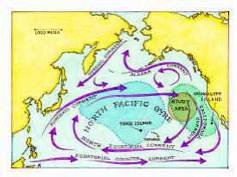 Snakes get a bad rap. Just because a few are dangerous doesn't mean they're all bad (in fact, many snakes are beneficial). Here are some common misconceptions about snakes that you may or may not hold yourself.
Snakes get a bad rap. Just because a few are dangerous doesn't mean they're all bad (in fact, many snakes are beneficial). Here are some common misconceptions about snakes that you may or may not hold yourself.
Snakes swallow their young to protect them. What actually happens is that some snakes (the garter snake, for example) carry their eggs internally until they are ready to hatch so that the babies are born live.
Counting the rattles on a rattlesnake will give you its age -- one rattle per year. Actually, rattlesnakes gain a new rattle each time they shed, which can happen several times a year. It is also not uncommon for rattles to break off. So counting rattles is not a reliable way of guessing a snake's age.
Snakes can only strike from a coiled position. Not true. A snake can strike from any position.
Some snakes hypnotize or "charm" their prey. There is no scientific evidence of this whatsoever. Some small animals do freeze when they're scared, so they may give the appearance of being 'charmed'.
Snakes are slimy. Snakes are dry and either smooth or scaly.
Hoop snakes make a hoop by fastening their tail in their mouth and then rolling. Believe it or not, there's no such thing as a hoop snake.
Snakes can jump up to two feet. Snakes can't jump at all.
Snakes always travel in pairs. Only during mating season will you see pairs of snakes.
Snakes suck milk from cows and goats. Milk snakes do go into barns, but they're looking for rodents to eat, not milk.
Reference: Ohio Public Library Information Network; texas snakes.net; Davidson College
 Deep, deep, deep in the ocean where there is total darkness, there are creatures who carry their own light sources. The female anglerfish, pictured here, is one of them. She has a bioluminescent organ floating over her head which she uses as a lure to catch her prey with those large, nasty looking jaws. With over 200 species of anglerfish, some of these ladies can grow to be over three feet long, though most are much smaller.
Deep, deep, deep in the ocean where there is total darkness, there are creatures who carry their own light sources. The female anglerfish, pictured here, is one of them. She has a bioluminescent organ floating over her head which she uses as a lure to catch her prey with those large, nasty looking jaws. With over 200 species of anglerfish, some of these ladies can grow to be over three feet long, though most are much smaller. 






